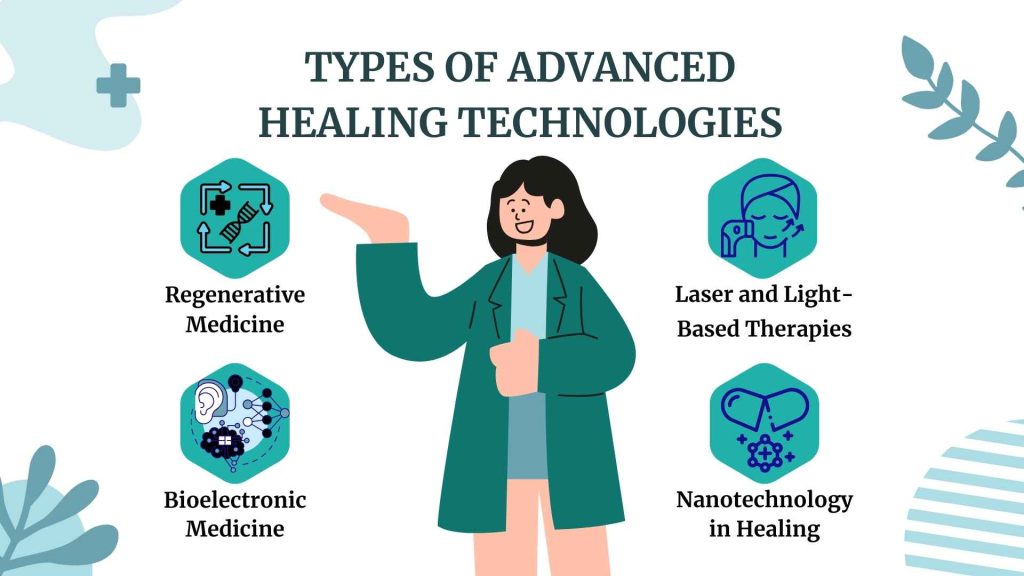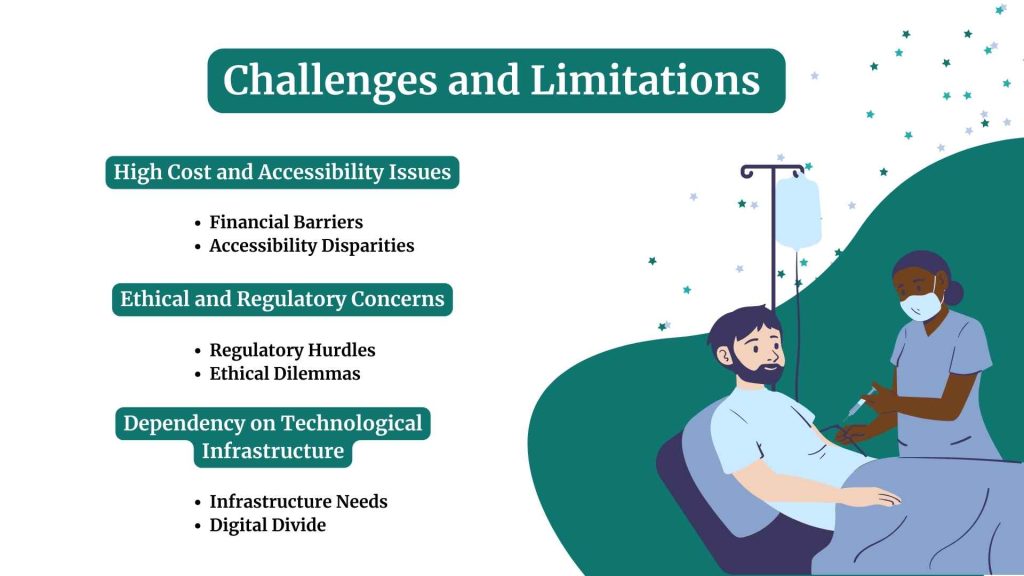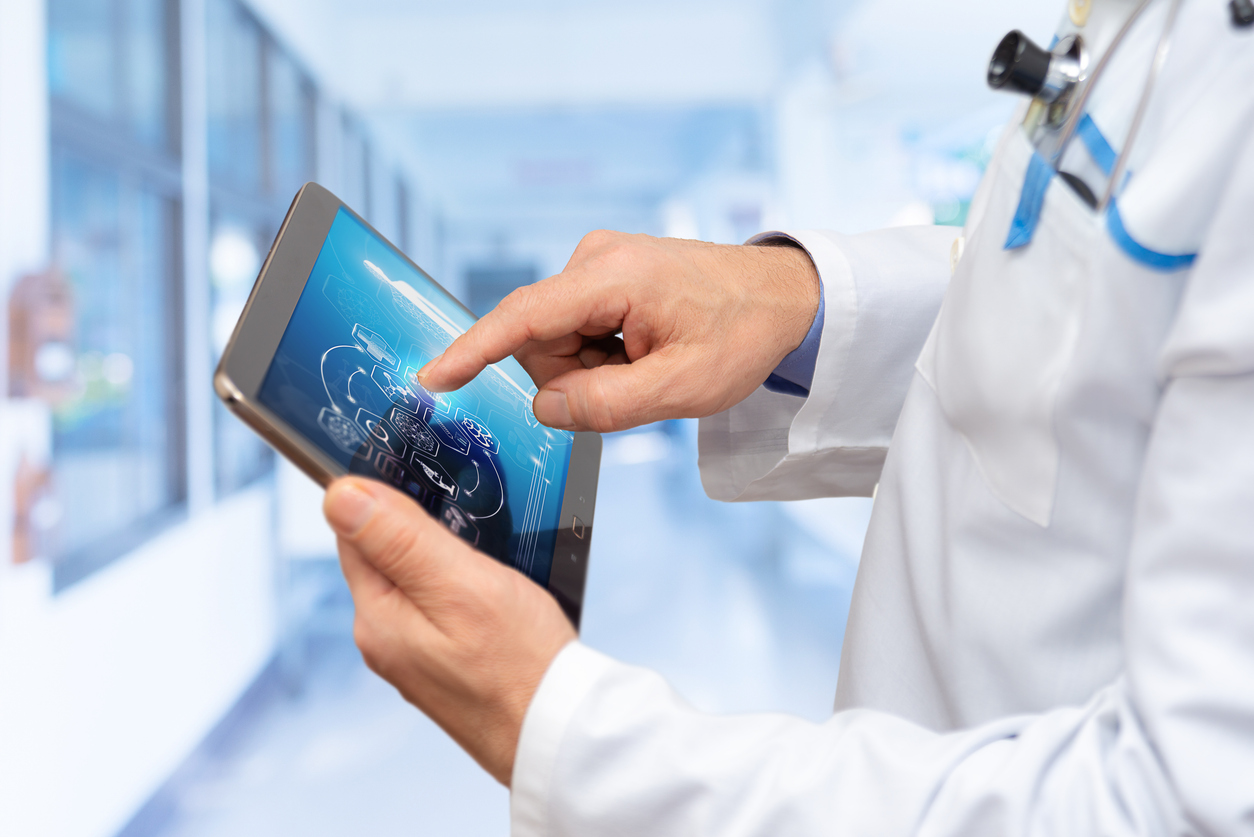One of the hot topics in healthcare right now is a market research report that showed the U.S. nanomedicine market is expected to hit around USD 102.17 billion by 2024. Plus, they predict that the market will grow at a rate of 11.84% a year from 2024 to 2023. [Source: US Nanomedicine Market Size 2024 To 2033]
This proves that from ancient times to the modern age, humans have always gone after innovative ways to mend the body. The market size is a prime example of how technological advancement is transforming the scene of medicine.
Technological innovations that are reshaping the future of patient care:
- Regenerative Medicine
- Laser and Light-Based Therapies
- Bioelectronic Medicine
- Nanotechnology
| Another cutting-edge technology in medical healing is red light therapy, which you have already seen a dermatologist to suggest. |
What Is Advanced Healing Technology?
You can’t summarize advanced healing technology in a few words.
The broad term holds a range of medical technologies that have been collected to speed up the healing process. The main purpose of these innovations is to minimize complications and improve patient care results. This advanced healing technology brings together ideas from regenerative, restorative, and supportive medicine to tackle various health issues.
Key Goals of Advanced Healing Technology
- It aims to expedite the healing process and recovery rates
- It minimizes tissue damage and optimizes the healing environment
- These technologies provide precise and targeted therapies
- It will reduce pain, discomfort, and recovery time
- Offers overall patient comfort and experience
Types of Advanced Healing Technologies in Modern Medicine

Regenerative Medicine
Regenerative stands for its name.
It is basically a treatment that regenerates or “replaces” the faulty human cells, tissues, or organs to get back into normal regular function. You will see this medicine to be used in the form:
- Stem Cell Therapy
- Platelet-Rich Plasma (PRP) Therapy
- 3D Bioprinting
Stem cell therapy uses stem cells to regenerate damaged tissues and organs. These cells can potentially differentiate various cell types and make them turn into a promising tool to treat a wide range of conditions. Right now, they are taking care of damaged cartilage and bone, as well as nerve regeneration and functional recovery.
PRP therapy takes platelets from the patient's blood and injects them into the injured area. Once the platelets start to grow, they stimulate tissue healing and regeneration. This therapy is now working on musculoskeletal injuries and chronic pain conditions.
3D bioprinting is all about creating tissue and organ structure layers using bio-inks to print living cells. This technology can revolutionize medicine by providing natural tissue-like and organ replacements.
Laser and Light-Based Therapies
Laser/light therapies are mainly a non-invasive procedure. It uses light energy to repair and regenerate damaged skin. We’ll talk about three kings of lease/light there:
- Low-Level Laser Therapy (LLLT)
- Photobiomodulation Therapy
- Ultraviolet and Blue Light Therapy
Low-level laser therapy uses small amounts or can be said to lower power to stimulate healing. It will reduce the pain in no time per session. You will see them getting used in soft tissue injuries and arthritis.
Photobiomodulation therapy reflects a specific wavelength of light to modulate cellular function. This one is also for healing. It has proven its ability by accelerating wound healing and improving cognitive function.
Ultraviolet and blue light therapy is famous for treating acne, psoriasis, and eczema. They can even fight against bacteria and fungi, making them useful for wound care and infection control.
Bioelectronic Medicine
Yes, bioelectronic medicines treat diseases using electrical pulses instead of drugs. It seems odd, but the electrical signal that comes from the nervous system actually offers distinctive clinical benefits. Here are some insights about Bioelectronic Medicine:
- Electrical Stimulation
- Implantable Bioelectronics
- Long-Term Disease Management
Electrical Stimulation enhances wound healing and nerve regeneration. It delivers a small electrical current to the injured area to promote cellular activity.
We have all seen implantable bioelectronics devices in pacemakers and deep brain stimulator devices form. Its primary responsibility is to regulate physiological functions and treat chronic diseases.
Bioelectronic medicines are a groundbreaking discovery for chronic diseases, such as Parkinson's disease, epilepsy, and rheumatoid arthritis. When it modulates neural circuits, the devices will alleviate symptoms and improve the quality of time.
Nanotechnology in Healing
Nanotechnology helps the wound heal faster by getting cell migration, proliferation, and differentiation. It boosts the healing process by using various methods to keep things moving in the right direction. You will see two things in nanotechnology:
- Nano-Medicine in Drug Delivery Systems
- Nano-Particles for Wound Healing and Infection Control
Nanotechnology is developing a targeted drug delivery system that can deliver drugs to and use them on the disease cell. It even minimizes side effects.
Nano-particles are used to create antibacterial coatings, which will eventually help prevent infection and heal wounds.
4 Major Benefits of Advanced Healing Technology for Patient Care
-
Accelerated Recovery and Reduced Downtime
- Minimally invasive procedures
- Innovative wound care
- Stimulates the body’s natural healing processes
- Doing a case study to see which type of therapy works best
-
Increased Precision and Reduced Side Effects
- Delivering treatments directly to affected areas
- Tailoring treatments as per patients' needs based on genes
- AI-powered diagnostic for early detection of diseases
- Robotics surgery for increased precision and accuracy
-
Pain Management and Improved Comfort
- Non-invasive treatment for pain relief and inflammation
- Implantable devices to manage chronic pain
- Distracting patients from pain by virtual reality
- Minimizing discomfort and side effects by advanced anesthesia
-
Enhanced Treatment Outcomes and Quality of Life
- Improved survival rates
- Reduced long-term effects of injuries
- Faster return to normal activities of daily living
- Improved quality of life
- Increased success rates and improved patient satisfaction
Challenges and Limitations of Advanced Healing Technologies

Even though advanced healing technology holds immense promise, it also comes with significant challenges and limitations that you can’t ignore. Let’s see what are those.
Future of Healing Technology in the Medical Field
| Category | Key development | Potential Impact |
| Emerging Research and Innovations | AI assistant to analyze vast amounts of medical data to know the disease patterns. | Better patient outcomes reduced healthcare costs and drug discovery. |
| Customize treatments to match the patient's genetic makeup and molecular profile. | ||
| Integration with Artificial Intelligence and Machine Learning | AI will read patient data to develop customized treatment plans. | More effective and efficient healthcare delivery and patient satisfaction |
| Predict disease progression and recommend preventive measures. | ||
| The Role of Data in Advancing Healing Technologies | Researching large databases to find new insights and inform future research. | Better decision-making and accelerated medical research |
| Tracking patient outcomes and treatment responses for continuous improvements. | ||
| Moving Towards Holistic, Patient-Centered Healing Solutions | Integrated health solution to address the whole person | Improved patient well-being and increased longevity. |
| Technology can be used to figure out the risk factors that support a healthy lifestyle. |
Frequently Asked Question
What is the most advanced healing technology used in hospitals today?
Currently, VR and AR (augmented reality) are getting the most hyped as the most advanced healing technology, which is seen in hospitals.
How does laser therapy accelerate healing?
Laser therapy uses light energy in the form of photons to damage cells. It stimulates cellular activity and reduces inflammation.
Are there any risks associated with advanced healing technologies?
Although these advanced treatments are great, they also come with a few downsides, such as potential side effects, higher costs, and electrical concerns.
How does bioelectronic medicine work in healing?
Bioelectronic medicine uses electrical stimulation to modulate the body’s nervous system. It heals the wound and relieves the pain.











